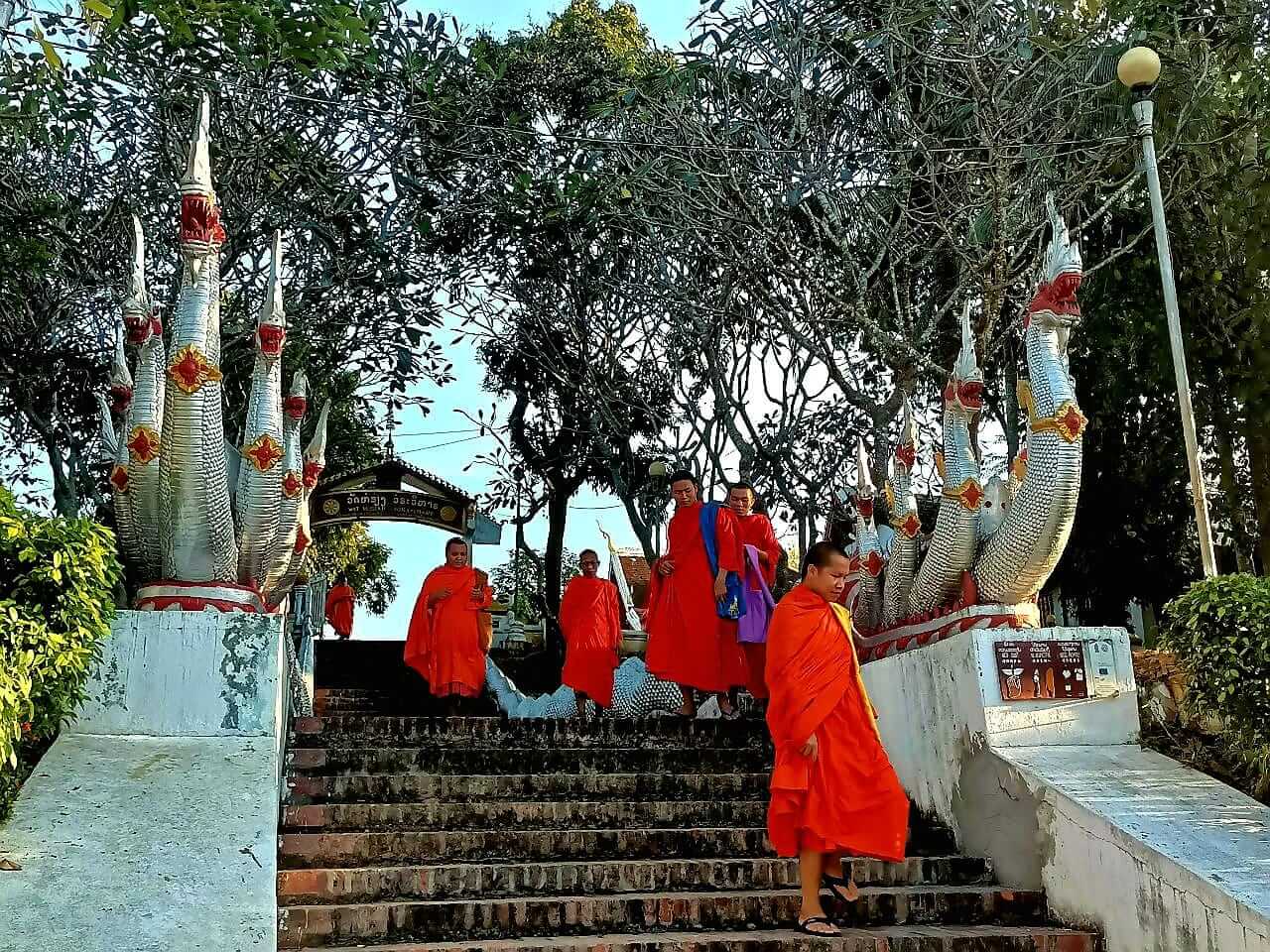
Best Things to do in Laos
Landlocked Laos is incredibly beautiful with small, but enchanting cities, golden spired Buddhist temples, magnificent mountain sceneries, untouched hill-tribe villages, peaceful local lifestyles, the stunning Mekong River, and so much more!
A journey into Laos with Wander Laos is a long-lost Asia. Laos presents visitors with a beautiful travel experience, rich in atmosphere, natural beauty, and Buddhist culture. Think of aromatic local markets and mouth-watering forays into local cuisine! The least populated of all Indochinese countries, many visitors to this unique land find it to be one of the most fascinating of all Asian destinations and one that leaves them with memories of warm people.
Altogether, travel to Laos proves to be utterly charming for those looking for a laid-back, memorable experience on a rural escape.
What are the best things to do in Laos?
1. Luang Prabang
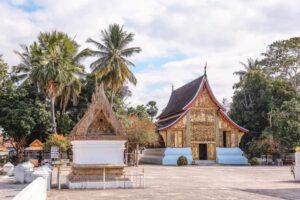
Luang Prabang, formerly the capital of a million Elephant Kingdom – a UNESCO World Heritage Site located in northern Laos, is an important yet charming little town that ranks among the must-visit destinations in Laos. It features former royal palaces and more than 30 temples, old French colonial architecture as well as beautiful landscapes.
Rise early and take part in the ritual of century-old “Tak Bat” Alms giving to orange-robed monks, enjoy a leisurely breakfast in a little cafe, stroll down the local morning Market, a vibrant place for an introduction to the colourful fruits and vegetables which make up the tasty regional diet. We highly recommend you explore the ancient architectures on foot, a leusirely boat cruise to Pak Ou Caves and the trip to Kuang Si falls, visit the bear sanctuary and stop on the way at Lao Buffalo Dairy farm etc.
2. Nong Khiaw & Muang Ngoi
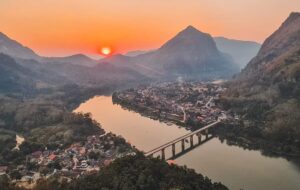
Nong Khiaw town nestled within tall limestone mountains, with the Nam Ou river snaking through the centre of town, Nong Khiaw is a beautiful backpacker haven in the north of Laos. This small town boasts great restaurants, bars, accommodation choices and jaw dropping scenery and activities. Besides offering a breathtaking beautiful view of high mountains, nice little houses and friendly locals, these destinations are also good for hiking and climbing high mountains, for visiting various tiny villages Ban Sop cham, Tham Phatok, Tad Mok or simply for enjoying your time in a hammock and enjoying the local food and beerLao.
Most people who visit Nong Khiaw will travel further up the river to Muang Ngoi. The river between the two villages is navigable, so you can take the boat. (Actually, the river used to be the only way to get to Muang Ngoy not very long ago, but now there is a road, too.)
3. Muang La
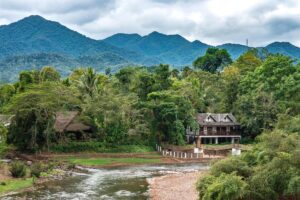
Muang La, situated in Oudomxay Province, Laos, shares its northwest border with Phongsaly Province. Muang La is a picturesque area, it offers a peaceful retreat and a deep dive into local traditions. This quaint town rests naturally beside the pristine Nam Phak River, which has been the lifeblood of the local community for centuries. Additionally, this area boasts captivating natural beauty, a rich historical heritage, a distinctive culture, and ancient ethnic groups such as the A Kha community in Aa No village.
Muang La is renowned as a significant destination for Buddhist worship, attracting thousand of pilgrims who come to pay their respects to the ancient Buddha statue known as Phrachaosingkham, which has been enshrined in the city for more than 2000 years.
4. Luang Namtha
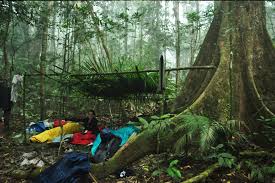
Luang Namtha province covers an area of 9,325 square kilometres (3,600 sq mi). Its provincial capital is Luang Namtha. The province borders Yunnan, China to the north, Oudomxai province to the east and southeast, Bokeo province to the southwest, and Shan State, Myanmar to the northwest. The province contains the Nam Ha National Biodiversity Conservation Area and is a sugar cane and rubber producing area. There are some 20 temples in Muang Sing, including Wat Sing Jai and Wat Namkeo. The anthropological Luang Namtha Museum is in Luang Namtha. Most tourist go to Luang Namtha for Trekking in Nam ha national park.
5. Phongsaly
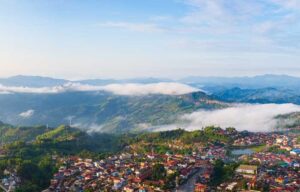
Phongsaly province covers an area of 16,270 square kilometres (6,280 sq mi), of which 77% has forest cover. It borders China to the north and west, Vietnam to the east, Luang Prabang province to the south, and Oudomxai province to the southwest. The highest mountain in the province is Phou Doychy with an elevation of 1,842 metres (6,043 ft). Protected areas in the province include the Phou Dene Din National Biodiversity Conservation Area and Nam Lan Conservation Area. Phongsaly offers stunning mountain and beautiful scenery and the Nam Ou river, it also famous for natural tea platation as well as multiple ethnic group minority. Trekking to remote villages to learn about the different of the people is one of the best thing to do while in Phonsaly.
6. Oudomxay

Oudomxay is located in the heart of northern Laos and is one of the most accessible of the far northern provinces. It is also known as “The Northern city – sea of clouds with different hill tribes”.
The rugged mountainous landscape has peaks up to 1,850 meters covered in varying forest types and wider fields. The province’s three main rivers are MeKhong, Nam Park, Nam Beng and Nam Kor. Oudomxay is mainly populated by the Khmu, Hmong and lowland Lao, with a total of 12 ethnic minorities, each with their own languages, cultural heritage and lifestyles.
There are many tourist destinations in the province, including Chom Ong Cave “the land of caves”, Tadnamkat waterfall – Namkat Yolapa Resort, the Sacred Phachaosingkham temple, Nam Hin Lake, the 600 hundred year old Phouthat stupa in the center of the town, “the symbol of Oudomxay” and many more.
7. Houay Say
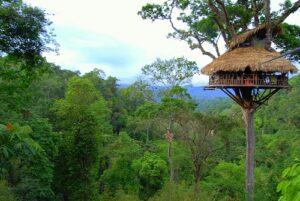
Bokeo, meaning ‘gem mine’ is the smallest province in Laos, but one of the most ethnically diverse with over 30 recognized ethnic groups. The Lahu, a Tibeto-Burman speaking people common in northern Myanmar and Thailand are present in Bokeo in significant proportions.
The province is located in the heart of the infamous “Golden Triangle” sharing borders with Luang Namtha as well as Myanmar and Thailand. Houai Xay, just across the border from the Thai city of Chiang Khong is a popular starting point for boat trips down the Mekong to Luang Prabang, a two-day journey south and The Gibbon Experience.
8. Phonsavan (Plain of Jars)
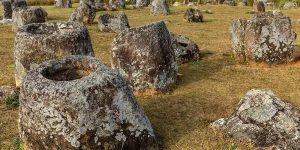
Phonsavan is the capital of the province of Xieng Khouang in Laos. It has a population of 37,507 and the name Phonsavan roughly translates as ‘hills of paradise’. Built during the 1970s, Phonsavan has picturesque countryside full of green hillsides and forests of pine trees. It replaced Muang Khoun which used to be known as Xieng Khoung which was ravaged during the Second War of Indochina. The colourful houses in the villages here are made from wood. Cattle raising provides a livelihood for the locals in this region. One can often see Hmong cowboys dressed in violet-and-brown attire complete with hats. New Year’s Day here is celebrated with bullfighting.
UNESCO has nominated the Plain of Jars in Phonsavan as a heritage site. It is a popular tourist attraction, receiving a many visitors every year.
9. Vang Vieng
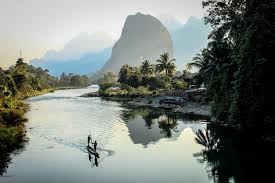
Vang Vieng[ is a town in Vientiane Province, northern Laos. Situated along the Nam Song River and surrounded by karst limestone formations, it lies approximately 130 kilometers (81 mi) north of the national capital, Vientiane. Originally an agricultural settlement, Vang Vieng gained international prominence in the late 20th century as a hub for backpackers drawn to its adventure sports, including river tubing, caving, and rock climbing. The famous attractions in VangVieng are Blue Lagoons, Tham Chang, Pha Nam Xay viewpoint etc. Tubing down the river Nam Song is one of the most popular thing to do in VangVieng.
10. Sayabouly
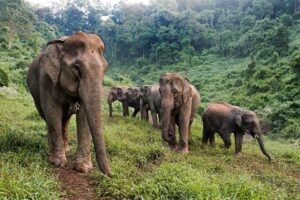
Sayabouly Province is situated in the northwest of Laos, sharing borders with Vientiane Province and Luang Prabang Province in the east, and Thailand in the west. This mountainous province has several peaks with altitudes of more than 1,000 meters. Travelling to this rugged landscape will reveal many beautiful mountains and flower gardens. The local people earn their living via agricultural products such as growing rice, cucumbers, cotton, cabbage, beans and sugarcane. Elephants continue to be used for loading and transporting heavy items. The province is also an important agricultural producer of rice, cotton, peanuts, sesame, maize and oranges. Elephant Conservation Center offers overnight trip for tourist from Luang Prabang.
11. Vientiane (Capital)
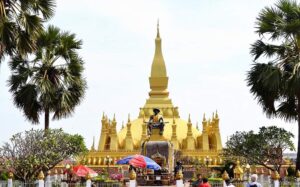
Vientiane Capital is the home to the most significant national monument in Laos: That Luang (Great Stupa), which is the symbol of Lao and an icon of Buddhism in Laos. Of the many beautiful Wats in Vientiane, a visit to Wat Sisaket is a must; built in 1818, this is one of the oldest temples in Vientiane. Other Buddhist holy places are Wat Ong Teu Mahavihan, known for its 16th century bronze Buddha sheltered by a carved wooden masterpiece, and Wat Si Muang, the site of the Lak Meuang or pillar-stone of Vientiane. Wat Si Meuang is also home to the guardian spirit of the city. Hor Phakeo, across the street from Wat Sisaket houses a beautiful collection of Buddha statues, including traditional Lao style of the “Calling for Rain” and “Offering Protection”. Spend a morning in the Lao National Museum, which displays an interesting mixture of revolutionary and contemporary exhibitions. The main sights in Vientiane are only a short walk or bicycle ride from most hotels. Wat Xieng Khouan, better known as the Buddha Park should not be missed: take a tuk-tuk to this unique park that includes Buddhist and Hindu. Shopping for handicrafts is easy in Vientiane Capital; visit Talat Sao (morning market) for a wide range of colourful textiles including silks, wall-hangings and other decorative pieces. For very fine handicrafts, try one of the many upscale galleries in the city center. Keep your eyes open for traditional wood carvings, mulberry paper and a variety of basketry made from bamboo and rattan.
12. Thakhek
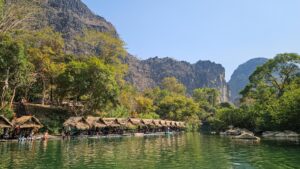
Nestled in the heart of Central Laos, Thakhek town is a full of great food, colonial architecture and history. A jumping off point for the famous “Thakhek Loop” and the amazing caves at Konglor, Thakhek town has become a hub for travellers heading to and from Central and Southern Laos. We have spent quite a bit of time exploring the town of Thakhek, really getting to know its nooks and crannies and we feel that it is well worth a place on your Laotian itinerary
13. Pakse
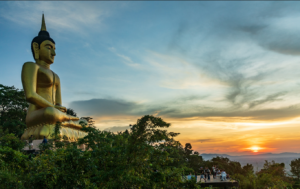
Southern Laos is known for its highlands and plateaus, waterfalls, temple ruins, Mekong Islands, relaxed ways and its sense of timelessness. The small city of Pakse in Champasak Province is the main hub for the region, and access is available via direct flights from Vientiane, Siem Reap and Ho Chi Minh City, or via nearby Ubon Ratchatani in Thailand just across the Chong Mek border.
Highlights for visitors to this area of Laos include the Bolaven Plateau with its pleasant climate, tea and coffee plantations, waterfalls and ethnic minority villages and Wat Phou – a Khmer temple ruin and UNESCO World Heritage site. The Si Phan Don (‘4000 Islands’) area of the Mekong River near the Cambodian border has many islands, rapids and waterfalls (Khon Phapheng Falls are often said to be the largest in Southeast Asia) small traditional villages, and the incredibly endangered freshwater dolphins that still remain in this part of the Mekong River.
14. Bolaven Plateau
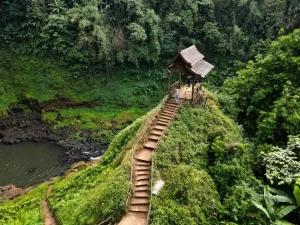
The Bolaven Plateau is a scenic high-altitude region in southern Laos, known for its beautiful waterfalls, coffee plantations, dense forests, and diverse ethnic cultures. It’s considered a “Spring of Lao coffee” and a source of life for smallholder farmers. The plateau is also famous for its cool climate and has a history of French colonial influence with coffee cultivation. Do not miss the visit to Tad Fane, Tad Yuang, Tadlo etc.
15. Champasack (Wat Phou)
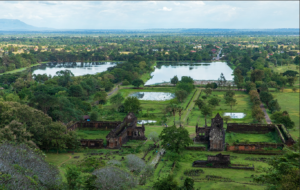
Champasack Province is known for its relaxed pace of life, warm hospitality and rich cultural, historic and natural heritage. The province has been ruled by various kingdoms through the ages, and today there are many archaeological remains scattered throughout the province. To the south of Pakse is the Wat Phou Temple Complex, a UNESCO World Heritage Site. Attractions also include the Ancient City, historic colonial buildings, and Done Daeng Island, known for its traditional livelihoods and forested trails. In the southern region of the province is Done Khong and the Four Thousand Islands, or Si Phan Done in Lao. On this stretch of the Mekong is the largest waterfall by volume in Southeast Asia, Khone Phapheng, as well as Li Phi waterfall, noted for its cascading emerald green waters. The endangered freshwater Irrawaddy Dolphins inhabit the Mekong near the Lao-Cambodian border and can be observed from locally chartered boats.
16. 4.000 Islands

The Si Phan Don 4,000 islands is a riverine archipelago in the Mekong River, Champasak Province in southern Laos. Si Phan Don is part of Khong District, including the islands and part of the mainland in the east. Si Phan Don is dotted with numerous islands, half of which are submerged when the Mekong River is in flood. The principal islands of Si Phan Don are Don Khong (the largest), Don Som (the second largest), Don Det and Don Khon. Si Phan Don borders Cambodia and historical and cultural ties link the people on both side of the border. Pakse is the closest of the bigger cities in Laos to the area.
Start your next trip to Laos? For more information, send your inquiry to hello@wander-laos.com
Related Articles:


